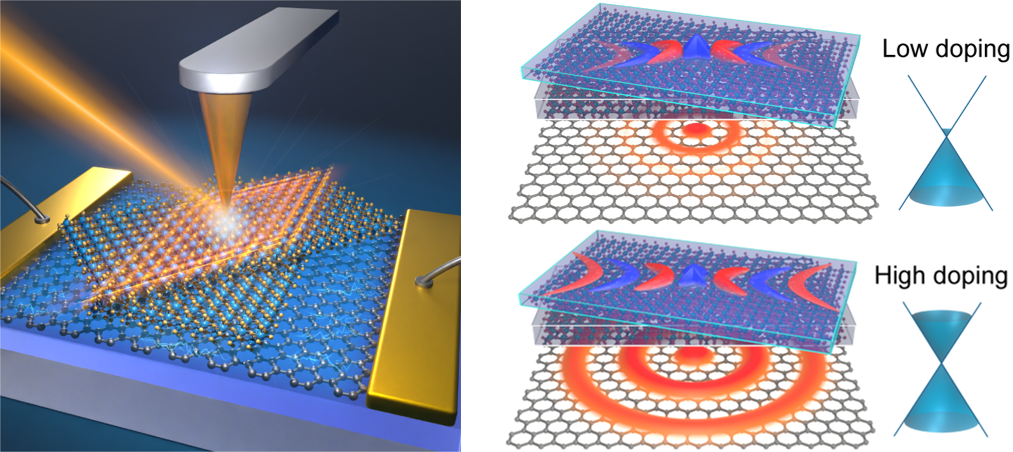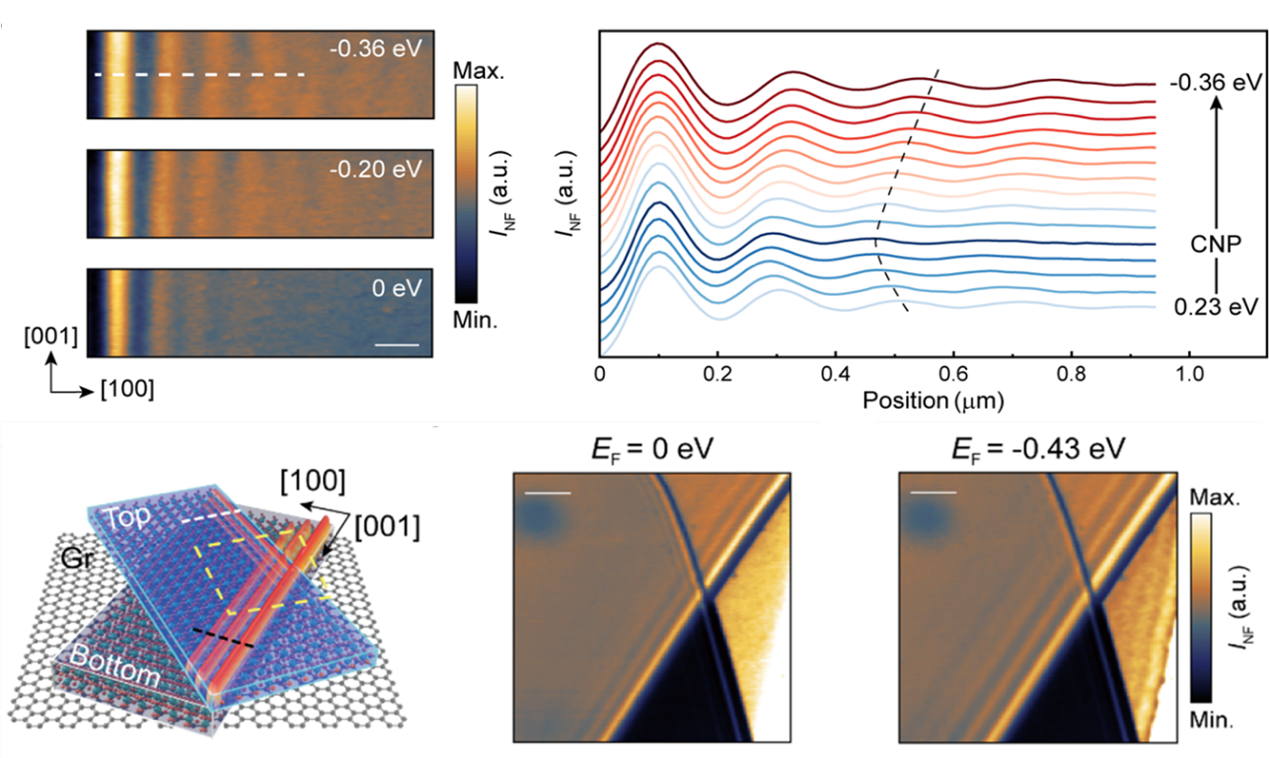Photon localization and manipulation at the nanoscale is a current research focus in the fields of nanophotonics and integrated photonics. Polaritons, as elementary excitations formed by coupling photons with particles or quasiparticles, exhibit excellent optical field confinement capabilities and offer great potential for realizing nanoscale photonic manipulation. Compared with conventional bulk materials, polaritons in 2D materials have the advantages of low propagation loss, high spatial localization factor and easy integration. In recent years, hyperbolic phonon polaritons with low propagation loss and propagating along a specific in-plane direction have been discovered in the natural van der Waals material α-MoO3. On this basis, topological transformation and active tuning of α-MoO3 phonon polaritons can be achieved by stacking two layers of α-MoO3 with a certain rotation angle or coupling α-MoO3 with graphene. However, the mechanism of gate-tuning α-MoO3 phonon polaritons still lacks systematic studies.
In view of this, Prof. Tao Jiang from the team of Prof. Zhanshan Wang and Prof. Xinbin Cheng at the School of Physical Science and Engineering, Tongji University, together with Prof. Andrea Alù from the City University of New York (USA), Prof. Markus B. Raschke from the University of Colorado at Boulder (USA), and Prof. Ke Chen from Henan University (China), have stacked twisted bilayer α-MoO3 with graphene and fabricated the devices. By precisely controlling the Fermi level of graphene, the in-situ, active gate-tuning of the phonon polaritons of twisted α-MoO3 has been successfully achieved. Based on the scattering scanning near-field optical microscope (s-SNOM) constructed at Tongji University, the propagation behavior of phonon polaritons in α-MoO3 with the change of graphene Fermi level was systematically investigated, and a corresponding theoretical model was developed, revealing the physical mechanism of the gate-tuning phonon polaritons in twisted α-MoO3. The research results were published in Nano Letters under the title of "Gate-Tuning Hybrid Polaritons in Twisted α-MoO3/Graphene Heterostructures".

Figure 1. Illustration of gate-tuning hybrid plasmon−phonon polaritons in a twisted bilayer α-MoO3/graphene heterostructure.
The paper firstly studies the coupling of phonon polaritons in twisted bilayer α-MoO3 with surface plasmon polaritons in graphene. The hybrid polaritons generated by the coupling of phonon polaritons and surface plasmon polaritons exhibit different propagation behaviors at different Fermi levels of graphene. Utilizing s-SNOM, real-space imaging of polariton with a spatial resolution of approximately 20 nm is achieved. By focusing the infrared laser beam at the metal-coated AFM tip, the polaritons excited at the tip propagates to the edges of α-MoO3. Upon reflection by the edges, they interfere with the polaritons beneath the tip, forming interference fringes. Extracting the wavelength, amplitude, and dissipation of these fringes allows for a detailed understanding of polariton propagation behaviors and facilitates the analysis of gate-tuning mechanisms for polaritons. The experimental results show that the values of wavelength, amplitude and dissipation of polariton are significantly tuned by graphene Fermi level, both in single-layer and twisted bilayer α-MoO3/graphene devices.

Figure 2. Gate-tuning hybrid plasmon−phonon polaritons in a single-layer and twisted bilayer α-MoO3/graphene device.
In this study, the active modulation of polaritons in twisted α-MoO3/graphene system was achieved by combining the bilayer twisting and gate-tuning. The associated physical mechanisms underlying the gate-dependent modulation were elucidated, which establish a crucial foundation for harnessing polaritons in diverse applications within nanophotonics.
Tongji University is the first affiliation of the paper; Prof. Tao Jiang from Tongji University, Prof. Ke Chen from Henan University, Prof. Markus B. Raschke from the University of Colorado at Boulder, USA, and Prof. Andrea Alù from the City University of New York, USA are the co-corresponding authors; PhD candidate Zhou Zhou, Renkang Song, and undergraduate Junbo Xu, majoring in optoelectronics of Tongji University, are the co-first authors. Collaborators who made significant contributions to the paper also include Prof. Zhanshan Wang, Prof. Xinbin Cheng and Prof. Di Huang from Tongji University.
Link to paper: https://pubs.acs.org/doi/10.1021/acs.nanolett.3c03769
Reprinted from Tongji University News: https://news.tongji.edu.cn/info/1003/85730.htm
